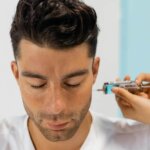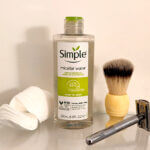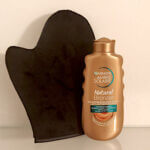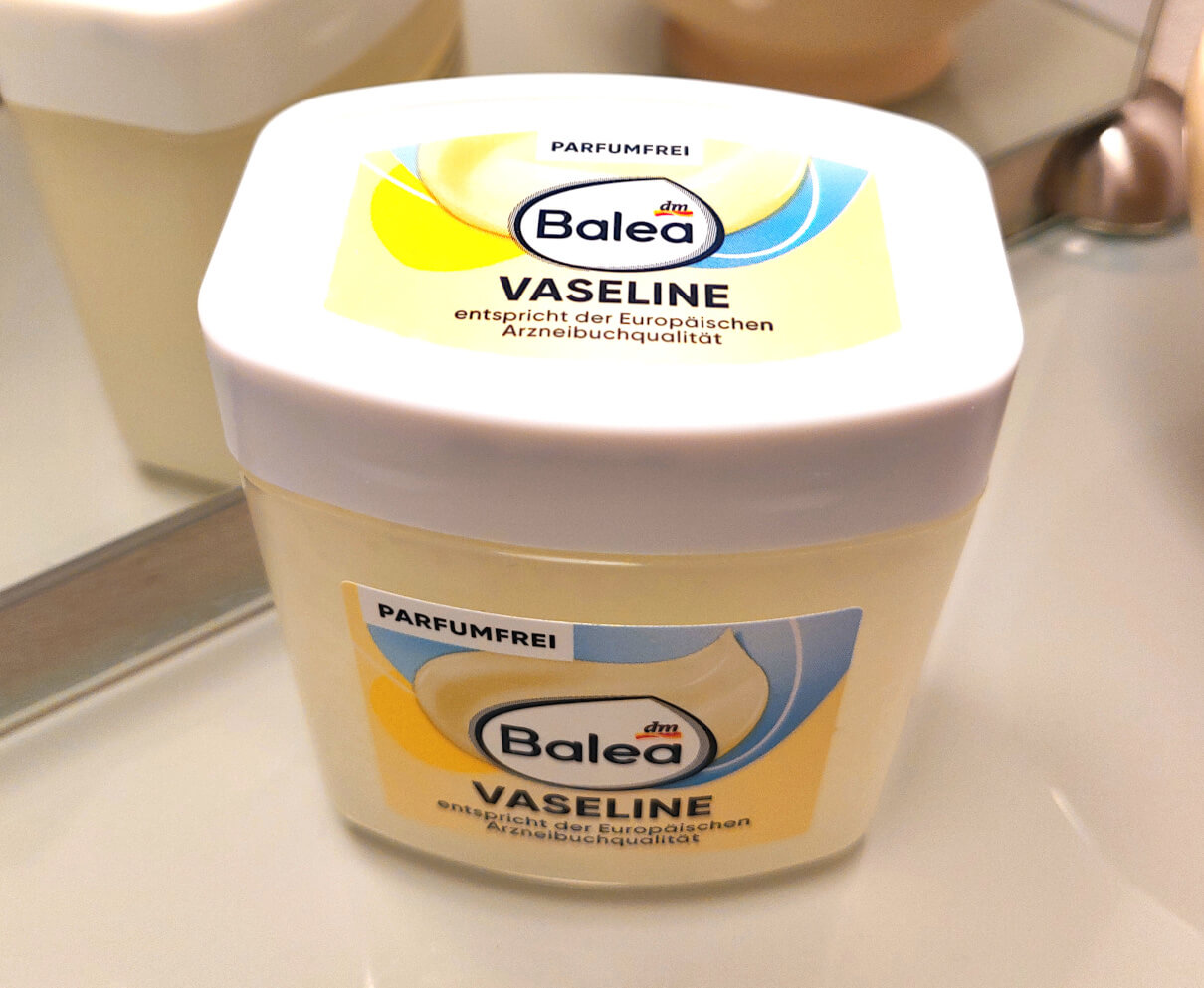
Explore how Vaseline or petroleum jelly benefits men’s skincare—from slugging and improved beard condition to tattoo aftercare—plus its history and misunderstood safety profile.
When I began my writing career back in 2009, I was always careful when referring to petroleum jelly, a skincare staple since the nineteenth century. I’d offer alternatives for those with “reservations.” I was complying with consensus.
But in recent years, many dermatologists and influencers have been recommending it—especially since the rise of slugging—which led me to believe there had been a shift in opinion.
Then, just the other day, a thread on X (formerly Twitter) praising petroleum jelly’s skincare benefits proved how wrong I was. The replies were unforgiving, labeling it toxic and attacking the original poster with language I won’t repeat here.
So before looking at its usefulness in men’s skincare, let’s take a look at what exactly petroleum jelly is and how it ended up with such a bad rap.
What Is Petroleum Jelly?
If you’re like me, you read the ingredients on the packaging of any product that comes into contact with your body. So, you’ve probably encountered petrolatum. This is petroleum jelly, sometimes referred to as soft paraffin.
For many, these terms alone are enough to trigger alarm bells. And critics citing polycyclic aromatic hydrocarbons, aka PAHs—potential carcinogens found in unrefined petroleum—don’t help matters.
Fact is, petroleum jelly is not unrefined petroleum. Highly refined and regulated, it’s one of the most versatile, skin-safe products available. It’s triple-purified and approved for cosmetic use in the US and EU.
In a nutshell, the backlash against petroleum jelly is less about its actual safety or efficacy and more about optics, ideology, and marketing.
If you’re interested in the deeper history of petroleum jelly, from its discovery on oil fields to its rise as a cosmetic staple, I recommend this detailed and fascinating resource on James Bennett’s website Cosmetics and Skin.
Why Petroleum Jelly Is Great for Men
To my mind, petroleum jelly is the most no-nonsense skincare product there is.
Most men, myself included, don’t want to commit more time and money to their skin than is absolutely necessary, but don’t want to appear neglected either.
A single tub of Vaseline can serve an array of purposes, from softening calluses to protecting your mustache while you sleep.
And even better, it’s keeps for up to 10 years. In other words, it probably won’t go off before you’ve had time to use it.
So, even if you don’t make it part of your daily skincare regimen, it can sit in your bathroom cabinet for years just in case.
Uses for Petroleum Jelly in Men’s Skincare
Let’s take a look at all the things it can do for your body and face. Some of these may be familiar; others may surprise you.
But before we do, don’t forget that petroleum jelly is an occlusive. In other words, it locks in moisture without adding to it.
Being non-comedogenic, it doesn’t clog pores. However, its occlusive nature can trap bacteria, making acne worse.
This is why, regardless of your skin type, you should only apply it to cleansed skin.
I like to use petroleum jelly at night—more on that later—but tiredness prevents me from performing a full cleansing routine. I therefore use micellar water. This you apply to a cotton pad, which you just swipe over your face and neck—it’s as simple as that.
1. Lip Care
Let’s begin with the most obvious use—preventing dry, cracked lips.
I always use lip balm with beeswax once a day in the morning, but petroleum jelly is a good alternative if you’ve run out.
If your lips are already damaged, beef tallow balm is both skin-nourishing and occlusive.
Or try Vaseline’s Advanced Healing Tube, which includes additional moisturizers and is designed specifically for chapped lips. Apply it beneath petroleum jelly.
Otherwise, try any of the following:
- Nivea Crème: Apply generously, allow it to absorb, then seal with petroleum jelly.
- Honey: This is a natural, antibacterial humectant, thus drawing water from the air and deeper layers of skin. Seal with petroleum jelly to prevent moisture loss.
- Aloe Vera Gel: A pure and fragrance-free product can calm inflammation. Again, use beneath petroleum jelly.
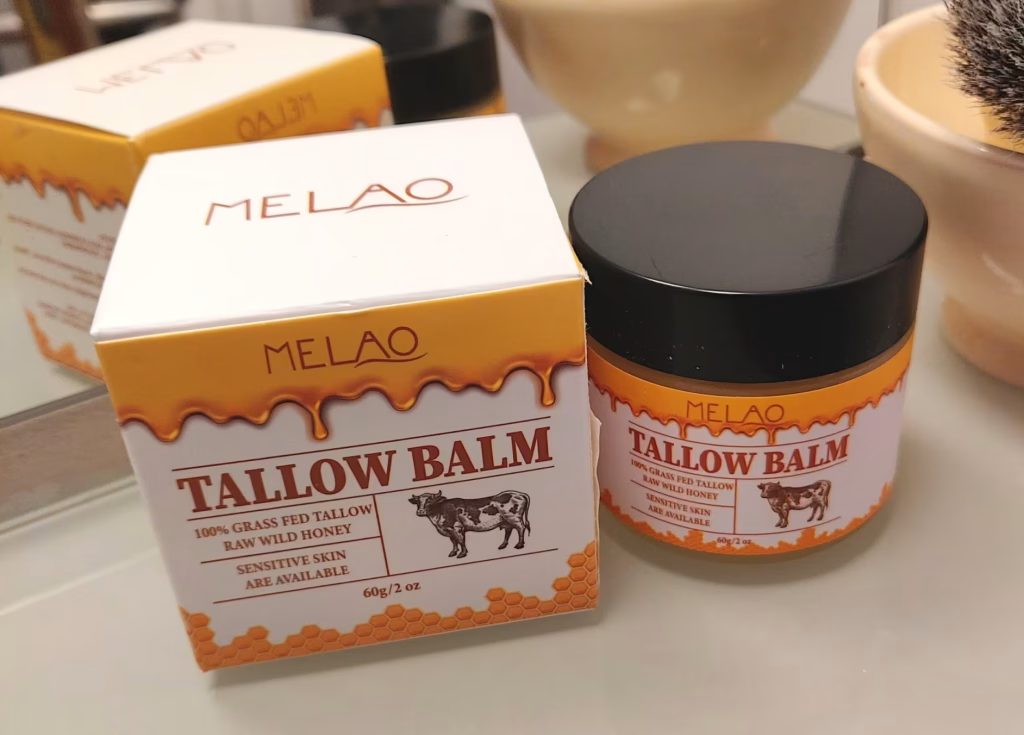
2. Cuticle Softener
Apply petroleum jelly to your cuticles before going to bed to prevent hangnails and rough edges.
Or apply 10 minutes before pushing back your cuticles during a manicure.
3. Dry Patches and Calluses
Use on elbows, knuckles, heels, or any other rough spots. It’s best applied at night so it can soften skin while you sleep, especially when worn under socks or cotton gloves.
Being prone to calluses, I always wear a foot cream during the day. But petroleum jelly is a good alternative if I run out.
4. Barrier Protection
Almost as obvious as lip care, this is probably the skincare application for which petroleum jelly is most well-known.
Windburn Shield
Petroleum jelly is excellent when it comes to protecting against harsh weather. It can shield against cold winds and pollution.
But no man wants a shiny face.
For this reason, I personally apply Nivea Crème when cycling or walking for extended periods in the bitter cold.
If petroleum jelly is all you have at hand, apply sparingly and only to vulnerable areas like your cheeks, nose, and lips. Allow to settle for about 10 minutes, then blot with a tissue to at least minimize shine.
Nose Care During Colds
If you have a heavy cold, apply around your nostrils to prevent redness and cracking.
5. Prevent Chafing
Use on your inner thighs, underarms, or anywhere prone to friction to reduce irritation and keep your skin smooth. This is especially useful during workouts or long walks.
6. Post-Shave Balm
I shave the old-fashioned way with a brush and safety razor since cartridges trigger razor burn, mostly on my neck.
I found that a thin layer of petroleum jelly reduced soreness—shine created below the jaw tends to go unnoticed.
7. Facial Hair Protection
Many years ago, I somehow managed to get petroleum jelly in the hair of my head and had a terrible time removing it. Don’t ask me how it got there—the less said the better.
But this won’t happen on whiskers. These are less porous than scalp hair.
Beards and Mustaches
I wouldn’t use petroleum jelly as a styling aid nor to tame flyaways on a beard or mustache, since it attracts lint and airborne particles. This, of course, is more unsightly than the problem it’s trying to solve. Beard balm does a much better job..
But I do coat my mustache at night to prevent dryness and breakage caused by pillow friction. Using it over your beard oil creates a slugging effect, which I’ll explain below.
Lashes and Brows
The same is true for lashes and brows; only use at night.
Reduced pillow friction helps preserve hair, allowing brows to appear fuller and lashes to grow longer; this is attractive on everyone, not only women.
8. Hair Dye Barrier
If you dye your grays or facial hair at home, apply a thin layer of petroleum jelly along the hairline, ears, neck, and the perimeter of your beard or mustache.
It forms a protective seal that prevents dye from soaking into the skin. Just be careful not to get it into the hair itself, or it may interfere with color uptake.
9. Slugging
I’ve dedicated an entire post to slugging, which was popularized by the K-Beauty movement and has since become more than just a fad. It’s now a widely accepted skincare practice for which petroleum jelly is considered the gold standard.
When applied as the final step in your nighttime routine, it forms a seal over the skin. This prevents moisture from escaping, keeping any active ingredients beneath it working longer and more effectively while you sleep.
And, as previously mentioned, applying to your whiskers will lock in your beard oil as well as protecting from friction.
A nice side effect is that you won’t need a pre-shave oil in the morning to optimize lubrication. This is great if you’re susceptible to razor burn.
Some men prefer to slug only the under-eye area, which is especially prone to dryness and early signs of aging.
10. Tattoo Aftercare
As staid as I am, I like tattoos and have some on my arms and chest, which are never visible in a professional setting. Whenever getting a new one, I use a dedicated, petrolatum-based moisturizer to form a protective barrier, prevent scabbing, and keep the area moisturized.
Petroleum jelly offers similar benefits if you don’t have a specialized cream at hand. But timing matters. In the first few days, follow your tattoo artist’s aftercare instructions—he knows how your skin will respond. Applying petroleum jelly too early or too thickly can trap bacteria and moisture, potentially slowing healing or causing infection.
Always wash your hands before application and wear latex gloves (if available) to keep out bacteria.
Whatever you do, avoid any product containing lanolin. It clogs pores, may cause allergic reactions, and can pull ink or lighten the pigment.
You may also have noticed that many artists use petroleum jelly during the tattooing process itself. It serves multiple purposes, including lubrication, ink control, stencil preservation, and easy cleanup.
11. Fragrance Anchor
Dab a little petroleum jelly only on your pulse points before applying cologne.
It helps the scent last longer by slowing evaporation.
12. Emergency Skin Sealant
For minor cuts, abrasions, or cracked skin, petroleum jelly can act as a temporary seal, protecting the skin while it heals.
This, in fact, was its main use when first discovered on an oil field in Pennsylvania back in 1859.
© 2025 J. Richardson
Related Posts
Disclaimer
The information provided by The Neat and Tidy Man (“we,” “us,” or “our”) on theneatandtidyman.com (the “site”) is for general informational purposes only. While we endeavor to keep the information up to date and correct, we make no representation or warranty of any kind, express or implied, regarding the completeness, accuracy, reliability, suitability, adequacy, validity, or availability of any information on the site. Under no circumstance shall we have any liability to you for any loss or damage of any kind incurred as a result of the use of the site or reliance on any information provided on the site. Your use of the site and your reliance on any information on the site is solely at your own risk.

